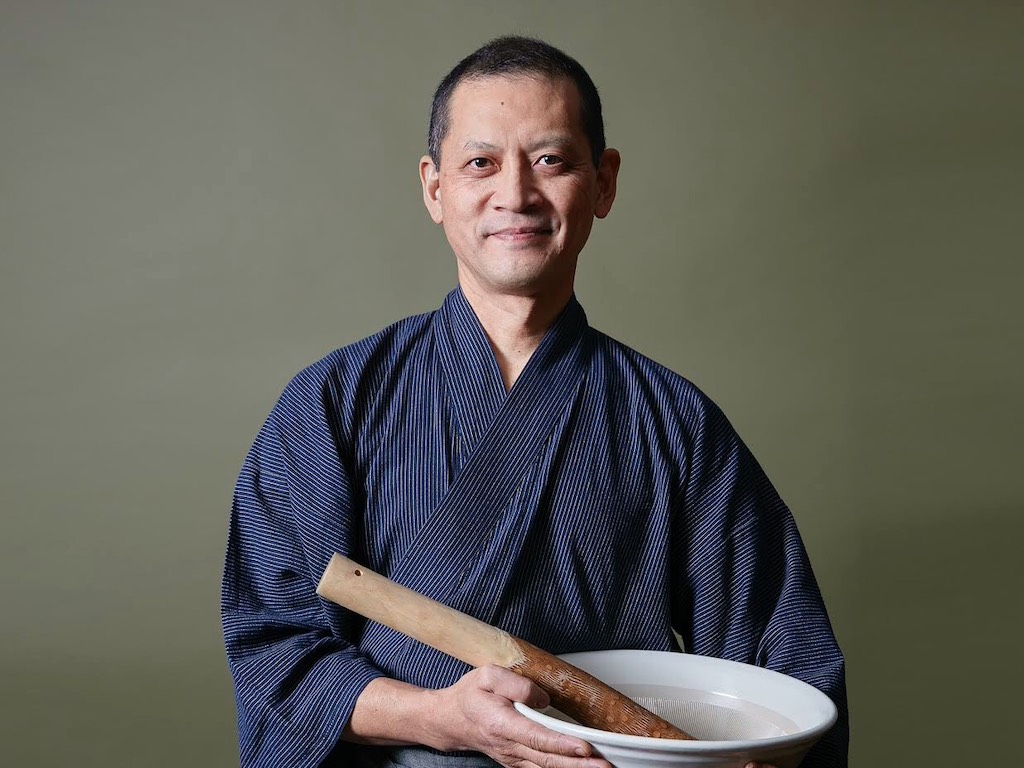Q&A w/ Chef Toshio Tanahashi: The Shojin Master On That Eleven Madison Park Menu, The Controversy Of Plant-Based & Why We Must Respect Plants
10 Mins Read
Chef Toshio Tanahashi is a master in shojin ryori, one of the oldest culinary traditions in Japan. Based in Okinawa, the southernmost part of Japan, the renowned shojin chef, who trained under Zen buddhist monks, is famously known as a “vegetable whisperer” with a wealth of knowledge and experience about pure plant-based cuisine before it became a mainstream trend. Back in 1992, he opened Gesshinkyo and ran it for 15 years, the highly-acclaimed Tokyo restaurant that even inspired the TV series Honmamon by the country’s national broadcaster NHK, where Toshio contributed as a cooking consultant. Today, he travels the world as a culinary consultant.
Which is why when Eleven Madison Park, the world-famous three-Michelin-starred New York establishment, decided to take its leap into veganism, Chef Daniel Humm called Chef Toshio, who spent 40 days working with the EMP team to help develop a number of shojin-inspired dishes for its revamped 100% plant-based menu.
We recently had the chance to speak to Chef Toshio, virtually, of course. We listened and learned more about the philosophy behind shojin and how he came to work with EMP. In this interview, he shares everything from his thoughts about the rise of plant-based cuisine in recent years to the evolution of fine dining and beautiful plating. Below, our conversation.
For this interview, we were joined by Andrea Cattaneo, Chef Toshio’s disciple, who assisted in translating from Japanese to English. Our transcription (by Sally Ho) is adapted from the translation.
GQ: How did you end up working with EMP and how was the experience?
TT: I had a Japanese friend who owns a Japanese restaurant in New York, and he’s friends with Chef Daniel Humm. Daniel wanted me to come to Japan to study shojin and its techniques, because of the change he was doing at his restaurant. Daniel wanted to go to Japan, but because of Covid-19, he couldn’t. It was around February at the time.
So then I told him, if you really wanted to learn shojin, I’ll come to New York for you. Daniel immediately responded and said: please come.
We started to speak about the process of how long learning shojin would take. I said it would take at least a year to learn and understand everything and to be able to cook dishes that have the depth and history behind them. But Daniel insisted that he needed to open the restaurant by June, so a year was too much time.
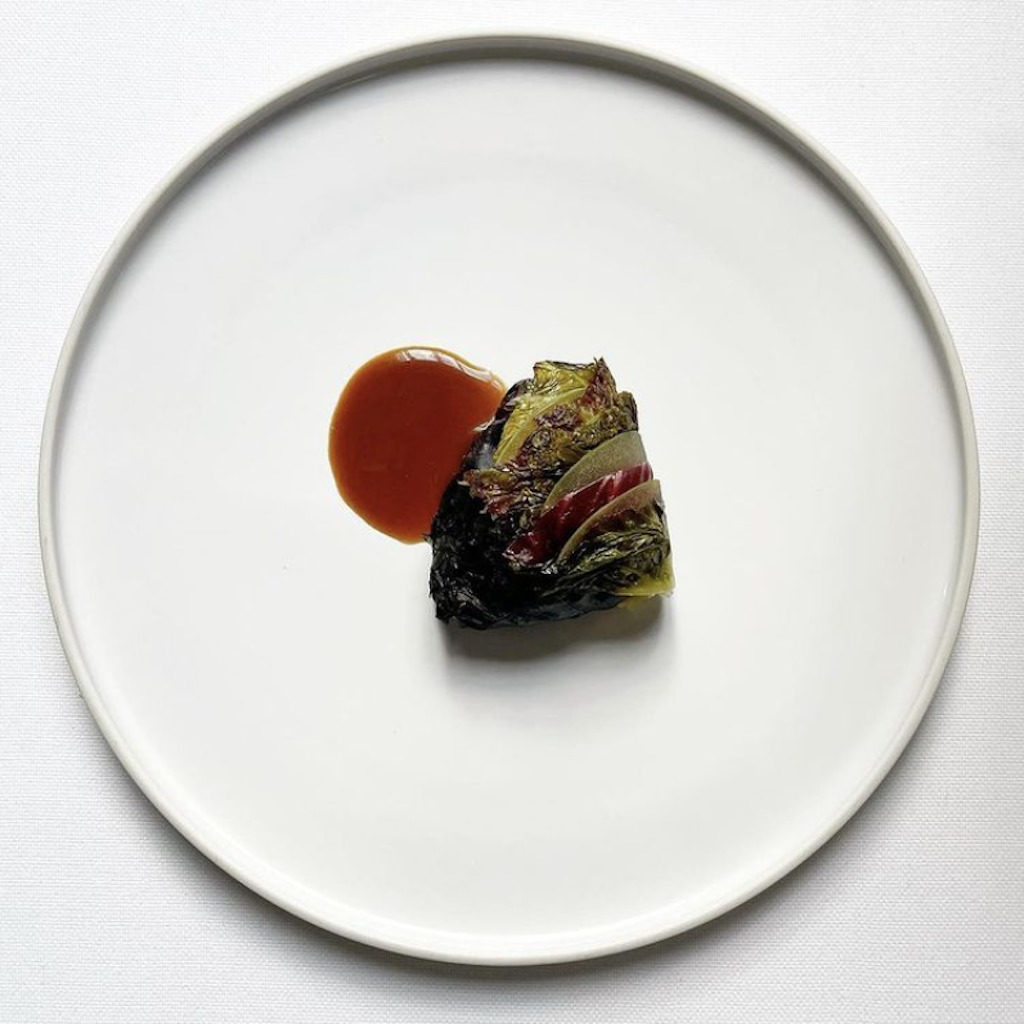
So I proposed that he give me at least three months. It’s not a simple thing. You’re talking about thousands of years of history. Daniel insisted that it would overlap too much with the opening of the restaurant. We finally agreed to narrow it down to 40 days. A thousand years to 40 days!
Daniel was a bit stubborn about the short time frame and pushed to learn the “core” or the central principles of shojin. Then, later on, to go into depth about the cuisine. For now, they’ve only really studied the surface of shojin, but that’s still a great first step.
GQ: So EMP’s menu is inspired by shojin, but not exactly a faithful reproduction of shojin technique and philosophy. Would you agree with that?
TT: Yes. Just to be clear, Daniel never said in the beginning that he would make shojin dishes. He always said it would be shojin-inspired. But this is not the end of his shojin journey. I am sure he will ask me to go guide them again. Why? Because shojin is not only about skill.
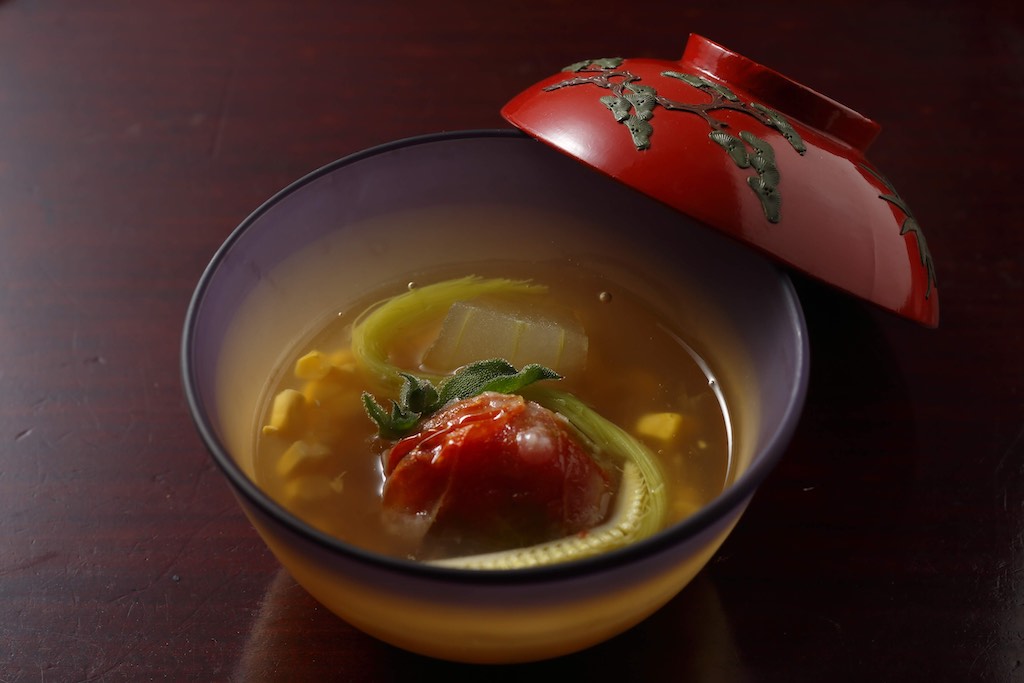
GQ: We want to know a bit more about your plant-based journey. Are you plant-based and do you believe that it’s a healthier diet overall?
TT: “Plant-based” is now fashionable for health and environment in the modern-day. But for me, it’s a philosophy based on respect for plants.
The concept of “Plant-based” makes me feel a bit uncomfortable, because we should all be quote on quote, plant-based. Without plants, we don’t exist. Because plants are the source of life—without plants, there’s nothing around. There would only be dust and stones. As human beings, we need to show respect to plants and see them as the most important thing on the planet that deserves respect. This includes bacteria. In reality, our lives can be sustained just by intaking plants. This is the logic of heaven and earth. Therefore, listening to the earth, we should honor and be grateful for the plants around us that we intake across the different seasons.
GQ: What do you mean by plant-based being a controversial concept? Could you expand on that a little?
TT: It’s controversial because it’s a concept that sees plants as just-food. Rather than seeing it as something that deserves respect. If you go back thousands of years ago, people were plant-based and no one would be surprised about that. “Plant-based” as a modern trend may be about health and diets. But for me, it’s about respect for nature. Throwing around the label “plant-based” is to me, unnatural and too much, overexaggerated. Even the dust doesn’t feel our respect towards plants. Using “plant-based” has become a business strategy. Plant-based should be obvious and talking about it too much can sound overdone. It is the reality that without plants, us animals cannot survive.
GQ: Is shojin cuisine always plant-based, as in, completely vegan and devoid of any animal products?
TT: Yes, it’s 100% plant-based. Real and authentic Shojin also does not use any of the five alliums—no garlic, chives, onions, leek, and rakkyo [Chinese onion]. There’s never anything like egg or dairy in shojin cuisine.
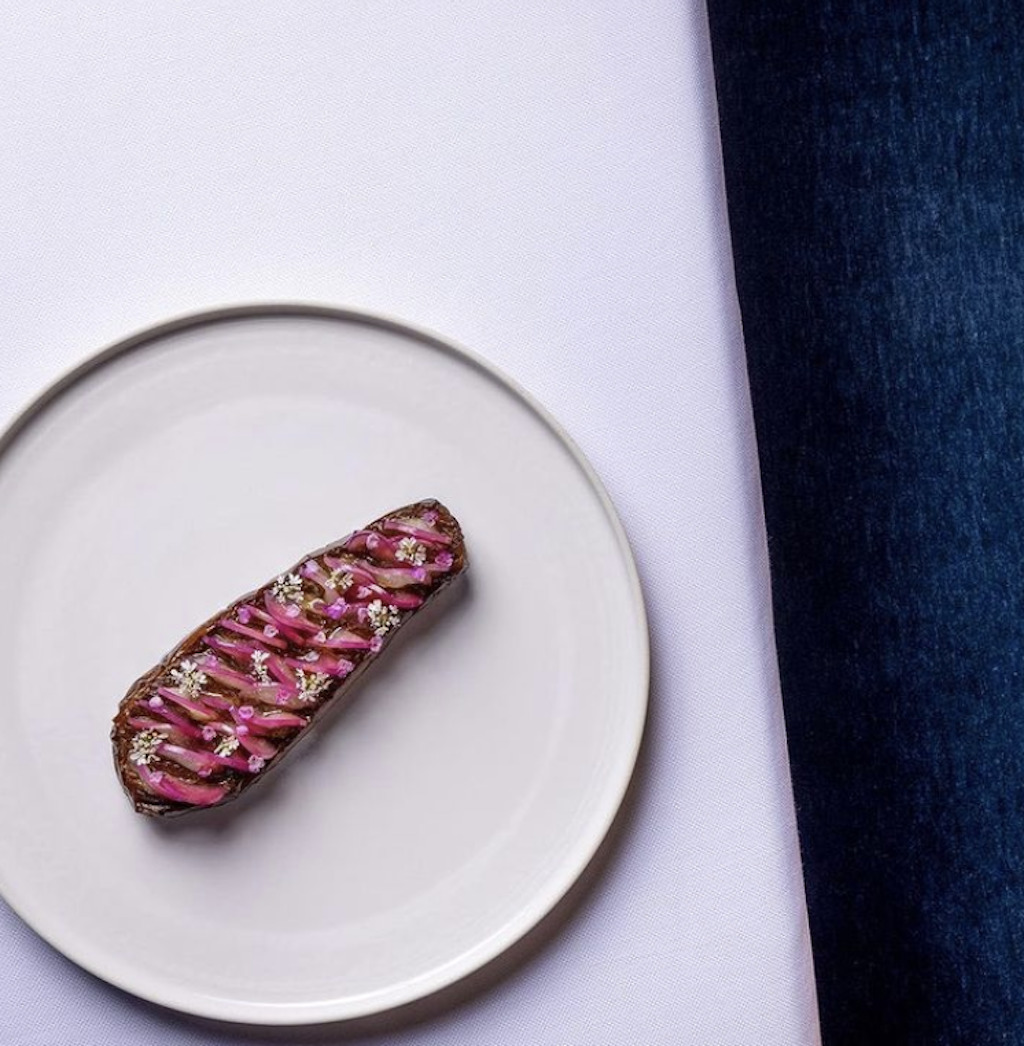
GQ: There are shojin traditions in Taiwan, Korea and China as well. Where does shojin originate from?
TT: The origins of Japanese shojin lie in China, and has a history of more than a thousand years. In the 13th century, a Zen priest named Dogen brought this culture to Japan, which was a plant-based culinary style and a complete dietary philosophy. He then adapted it and came up with a cooking style and spirituality that suited Japan’s climate and ingredients. In China and Taiwan, there are often dishes that resemble meat and fish, but Japanese dishes do not try to imitate meat and fish.
GQ: Looking at EMP’s menu, there are ingredients like celtus and tonburi. These are mostly unknown to Western audiences and not really locally available in the United States—and shojin is about sourcing locally as well. So how did EMP navigate this?
TT: The chefs at EMP are really well trained and they were really interested in learning about the ingredients. We went to different Japanese shops in New York to search for these ingredients, and then we also experimented with some American ingredients for those we couldn’t find. When I arrived in New York, we brought in over 100 kilograms of ingredients and tools. These were traditional Japanese tools for them to learn the authentic techniques of how to cook in the traditional shojin way. But because shojin is also based on cooking with local produce, EMP also tried to adapt to using local American ingredients. It would be difficult to use completely Japanese tools and ingredients, but working with the local farmers, I’m sure they will have a wide range of good quality options. I would like it to be that way in the future, I hope.
GQ: In fine dining, there’s Michelin French food and there’s kaiseki. Both of which appear to be inspired by shojin cuisine, in one way or another. Do you think there’s a line of inspiration drawn from shojin, to kaiseki to French fine dining? From the tasting menus to beautiful plating?
TT: It’s true that everything started from shojin, then it went to kaiseki. Then kaiseki gave a lot of inspiration to French cooking. French cuisine uses a lot of techniques from both shojin and kaiseki to develop nouvelle cuisine of really small portions and well-decorated dishes with tweezers and edible flowers. It’s about reducing the portions and making the dish more and more beautiful.
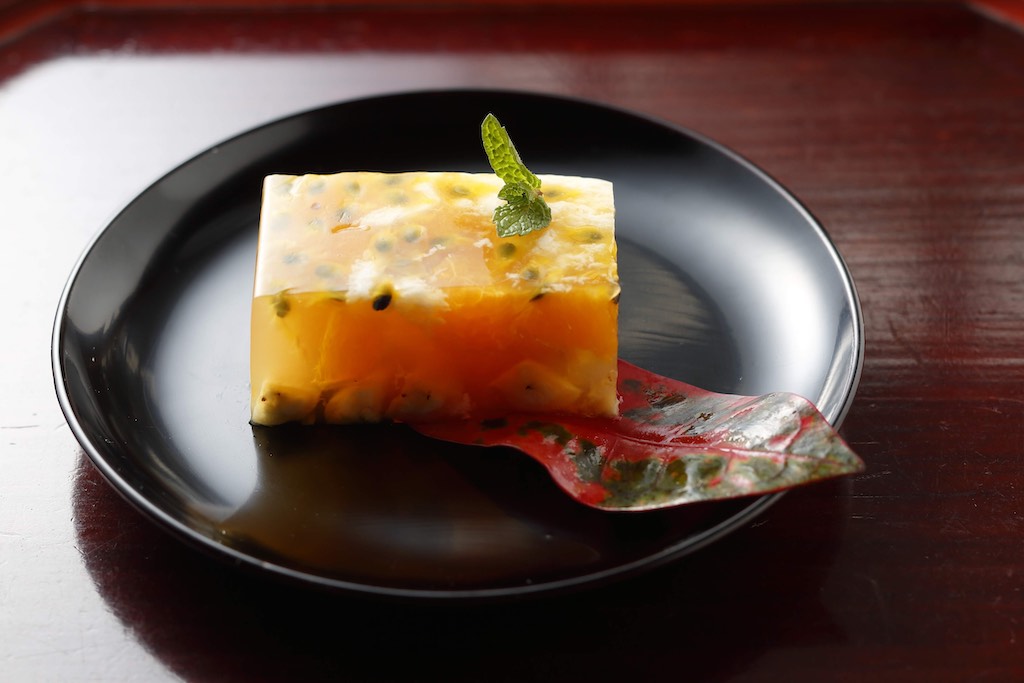
But I think that brings people further away from what cooking is really about. Nowadays in Japan, there’s this trend of “Insta-bae”, where dishes have to look beautiful enough to take pictures for Instagram. So personally, I’m not really a fan of this.
I believe that the real thrill of cooking lies in dynamism. I was rigorously taught by my teacher, “Abandon your knife!” Rather than making the best use of ingredients with artistry like painting, many use them artificially. By this, I mean that every Michelin dish looks similar because many often misunderstand making the best use of ingredients with artistry. The style of cooking should be free, but it has become unfree [in Michelin style cooking]. Buddhist cuisine is described as “finding freedom in the absence of freedom.” No meat and fish, only vegetables! Following this philosophy, you can achieve true freedom and if necessary, you can cook meat and fish.
Right now in the food world, there are two main problems. One is the low moral standards of people not really respecting others, and there’s also the issue of no copyrights. Cooking is the only art that doesn’t have a copyright, unlike things like literature and science. You can create a dish and everyone else can replicate it.
At the same time, we need to remember that food is happiness and must be something for everybody. It should be shared. Today, chefs are obsessed with showing off their skills, but they also have a social position in society. They give importance to human relationships and help people learn about cooking. And in cooking, there are skills and morals, though that’s becoming more and more absent in the learning process now. Chefs that don’t respect ingredients or the environment, cannot truly have respect for other human beings as well.
GQ: We want to know more about your thoughts on the rise of plant-based meat. Things like Impossible Foods and Beyond Meat, these alternatives that are trying to replicate. What’s your take?
TT: As a business, it’s good. People are free to do what they want and it’s become really popular. But for me, I don’t see the respect for plants in the process. And if a person really respects plants, you would eat them in their integrity.
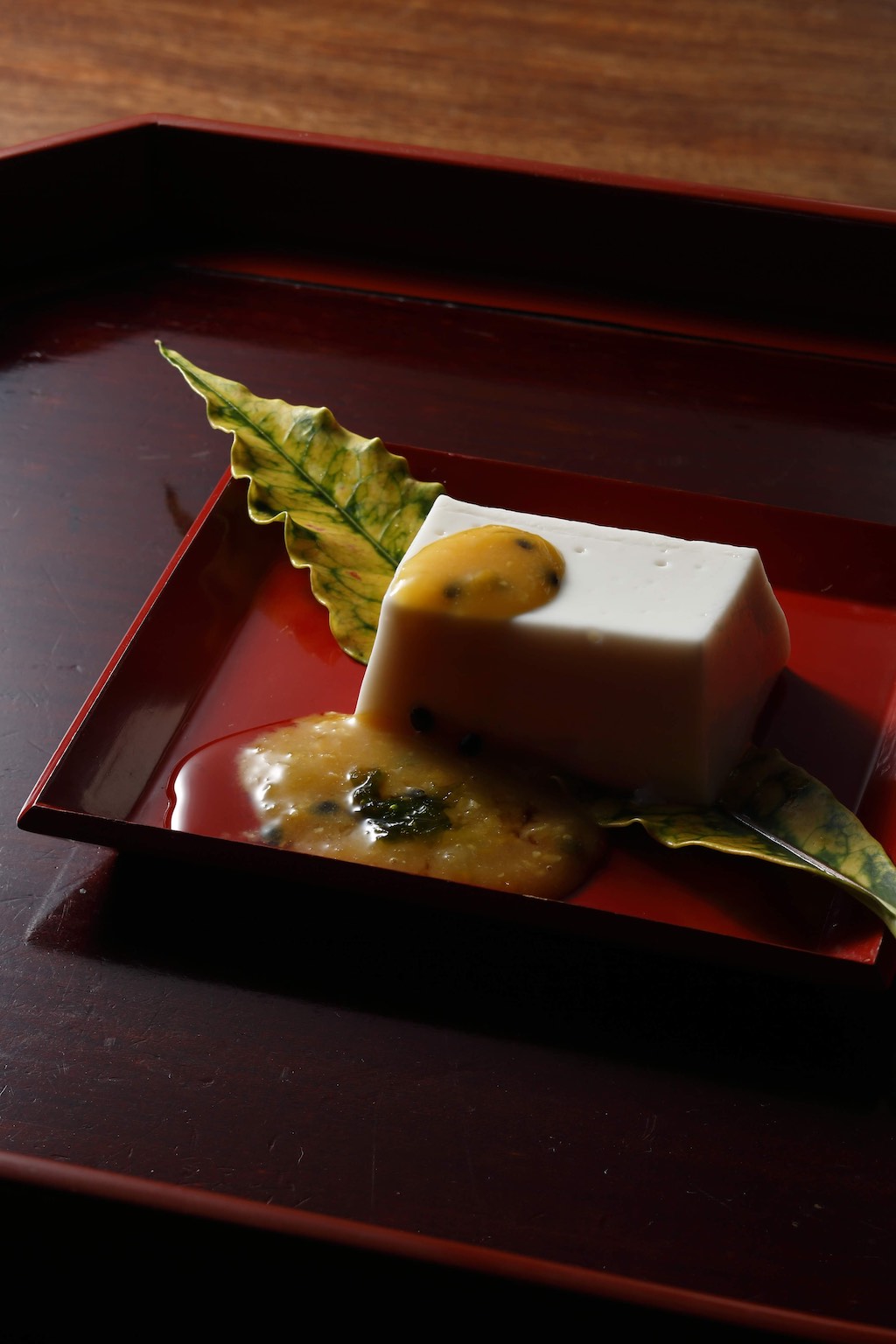
What plant-based companies are doing is taking part of the plant and transforming it to make it as close as possible to real meat. So the people who eat these products don’t really want to eat plants, they want to eat meat.
That’s another reason why I say the concept of “plant-based” is controversial. In the shojin philosophy, you just want to eat plants and give respect to them. You don’t transform them into meat, or make it a business. I’m not judging whether it’s a positive or negative thing. It’s just that it’s a business and the end goal is money.
GQ: Shojin cuisine is something that takes many years of training, incredible skill and experience. But it’s also a cuisine that says ‘let’s respect and celebrate plants.’ So would you agree with making shojin more accessible to the average home cook?
TT: I believe it’s really simple and easy for people to get closer to shojin. The biggest thing you can do is to throw away all the machines you have in your kitchen. Go back to the origin. Shojin was born over a thousand years ago and people are continuing this tradition today. So everyone should be able to do it.
Don’t use the complex machines, just stick to the basics. There’s this paradox now, where people are so specialised and cumbersome that they have forgotten how to do the simple things.
To do shojin cooking means to go back to the origins. You have vegetables and your knife. Spend time with them through your hands. Learn to cook and prepare all your dishes without other useless utensils. Only have the basics of what you need. That’s the basics of cooking.
We have too many excuses nowadays, whether it’s not enough time or being too busy. Or maybe vegetables don’t satisfy you enough. And then that’s why people are going to buy and eat processed foods that are fast, but they aren’t healthy for us. It is true that technology is becoming more advanced, but at the same time, humans are becoming lazier. We are becoming unhealthier, and family unity is also breaking apart. The human’s infinite greed and ego, will not only ruin human beings but will destroy the environment. Shojin contributes to health, environment, sustainability, and mindfulness.
All images courtesy of Joakim Blockstrom.

